In Apollo 11:
Between the photos AS11-40-5862 and AS11-40-5863, the photographer moves on the right and back:
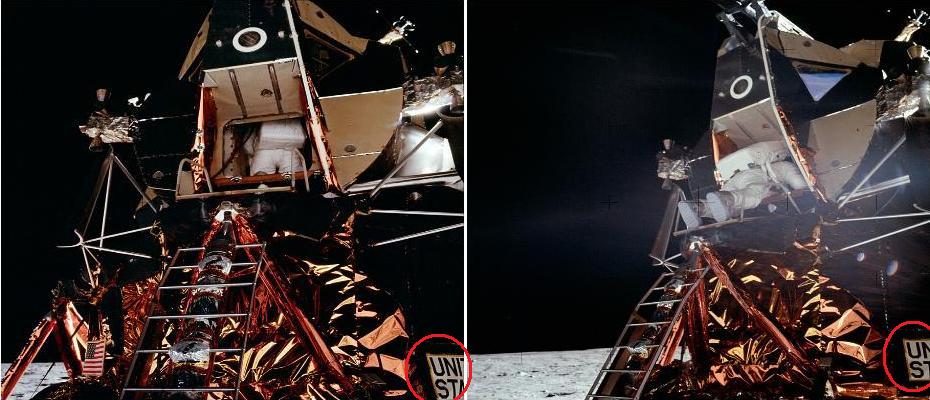
We would expect the US plate (circled in red) on the extreme right to be more visible on the second photo...but, it's the converse, it's even less visible on the second photo!
On the photos AS11-40-5897, AS11-40-5898, and AS11-40-5899, Armstrong takes three shots of a commemorative metallic plate fixed on the ladder:

The two first photos had a bad luminosity, but the third one has a good luminosity, like Armstrong had miraculously found the good setting; however on the third photo there is a vertical object (I have circled in red) behind the ladder and on the left which disappears.
This is an example of disappearing object, there are other examples.
There are several examples of ravins in which a rock disappears or is moved.
This is an animation made with the photos AS11-40-5957 and AS11-40-5958:
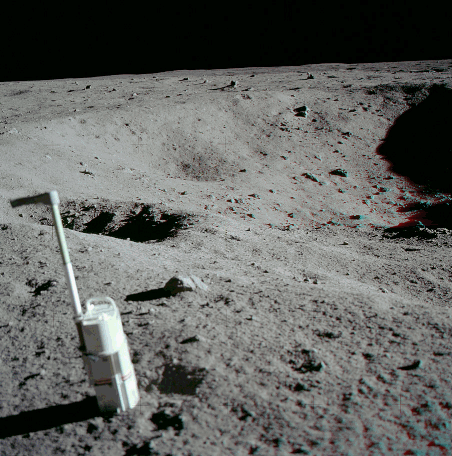
If you look up, you see an translation, and if you look down, you see a rotation.
There are many other examples in which the movements you see in the upper part and the lower part of the photo are different.
This is an animation made from the photos Ap11fr06 and Ap11fr07 (which are taken from a camera at the top of the lem):

The astronaut just moves his hand up, and his whole face, and even a part of his suit become completely black...very credible.
On all the photos taken from this camera, there is an incoherence; there is one which is well known, the one with the astronauts having shadows of different lengths, but the other photos also contain incoherences as well; it's just a question of being capable to see them.
In Apollo 12:
Apollo 12 starts very well:
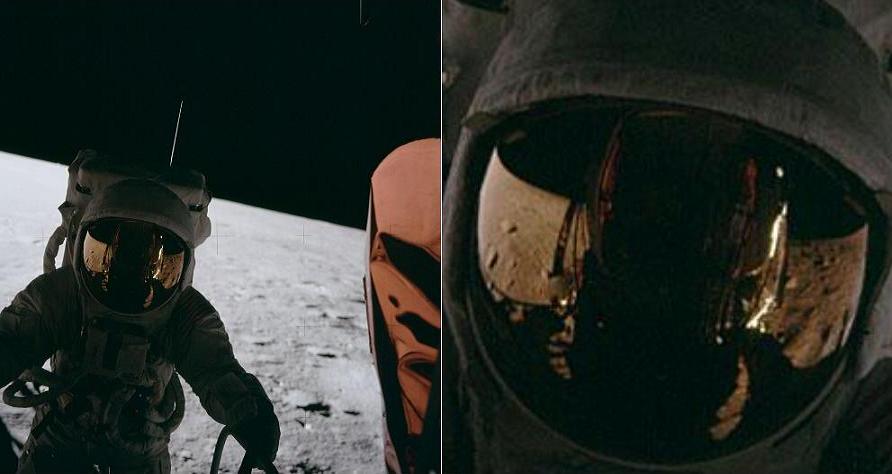
The astronaut is facing the lem and not the lunar ground, but on his visor we see the reflection of the lunar ground like he was facing the lunar ground instead.
Such illogisms are very frequent in the journal.
This one is one of the most remarkable of the Apollo journal:
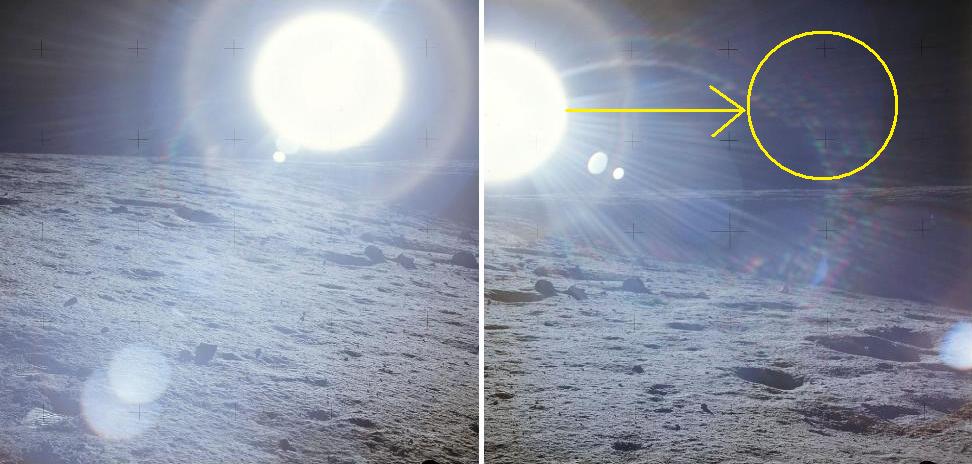
The astronaut is walking along a crater (photos AS12-46-6767 and AS12-46-6768) ; on the second photo, the sun should have followed the astronaut, but it's still at the exact beginning of the crater like it was on the previous photo (you can see it's the same crater by examining the artifacts on the ground, in particular the three stones).
Walk along a crater, or along a hill, and you'll see that the sun will follow you.
The fakers have put the sun at the beginning of the crater, because it was an easily identifiable reference, and it was helping the viewer to see that it was not the sun.
This one is also a classic:
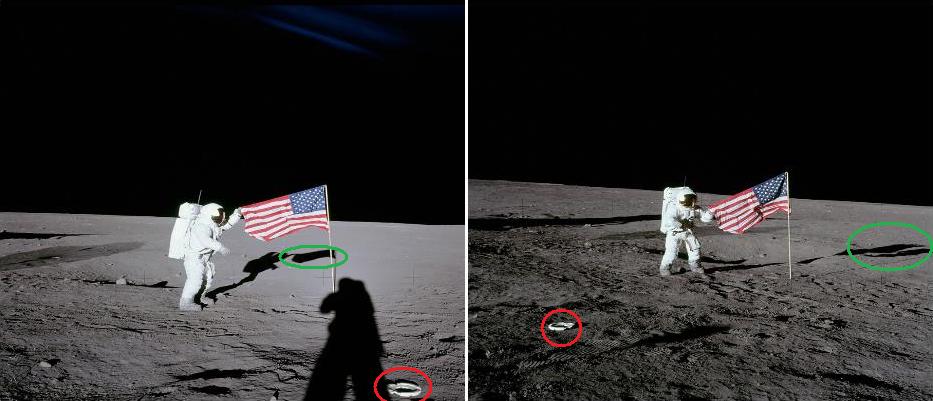
By examining the artifacts on the ground, the astronaut's shadow and the white object I have circled, you can see that the scene has rotated...but the flag has not followed the rotation.
There are other such examples, for instance the scene rotating around Surveyor or the ALSEP, but the latter refuses to follow this rotation.
There is a photo of the sun with an excellent horizon line at the beginning and the end of the mission:
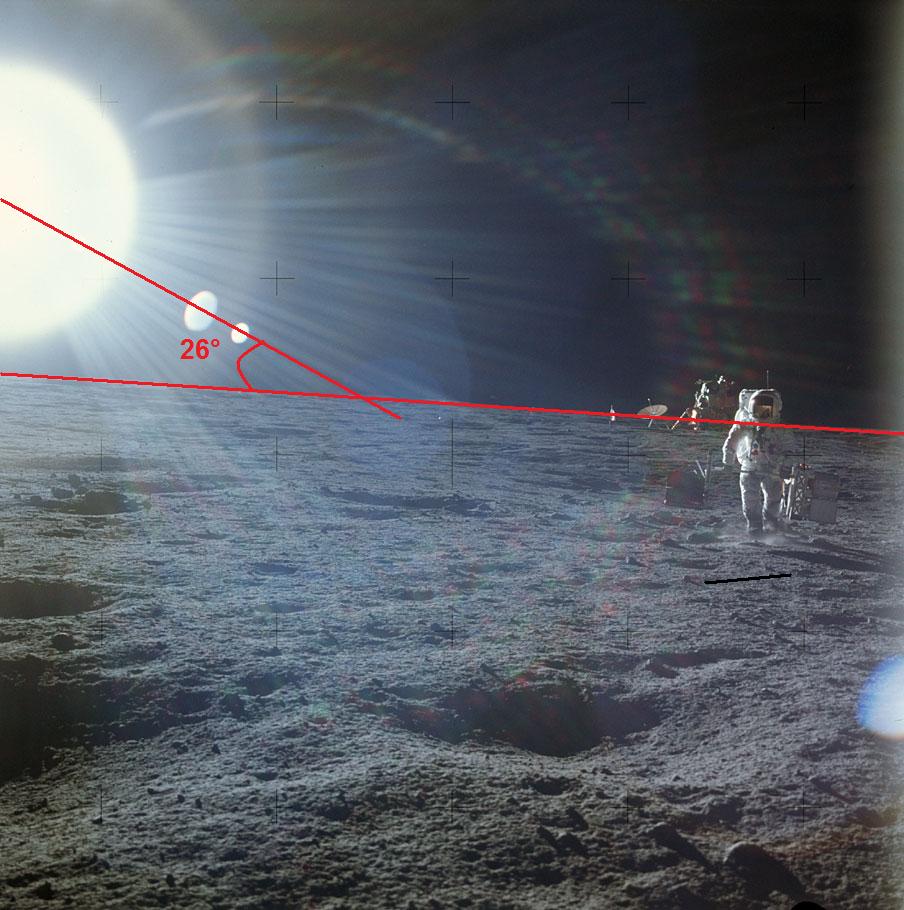
These photos allow to measure the inclination of the sun at the beginning and the end of the mission (I have measured 26° at the beginning and 38° at the end).
We also have the photos of the flag with its full shadow at the beginning and the end of the mission; thete is an artifact which helps locate the end of the flag at the end of the mission, so we can have the two shadows on the same photo.
When I use these shadows and the corresponding sun's inclination angles to measure the height of the flag, I find a height which is very close for the beginning and the end of the mission...but double of the height we see on the photo:
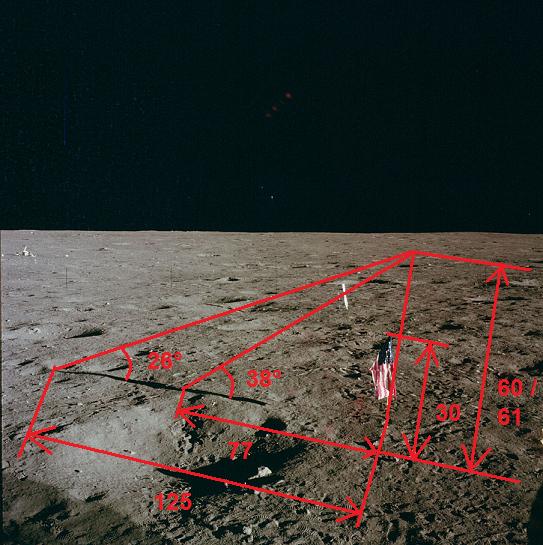
In Apollo 14:

Here we see an example of the phohographer seen in profile on his shadow...which is impossible since he is mandatorily facing the scene when he takes the photo!
Sometimes, you can make appear something by adding luminosity.
Here is an example in Apollo 14:
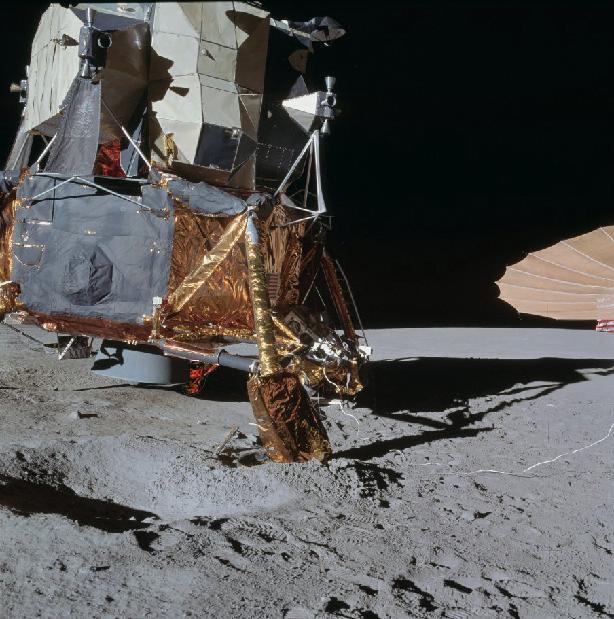
I have added luminosity near the Lem's reactor, and we see the face of a red devil appear (no kidding, this face is really here!).
in Apollo 14, we can see again the astronaut moving laterally, and the sun remaining static and not moving with him (and even changing size):
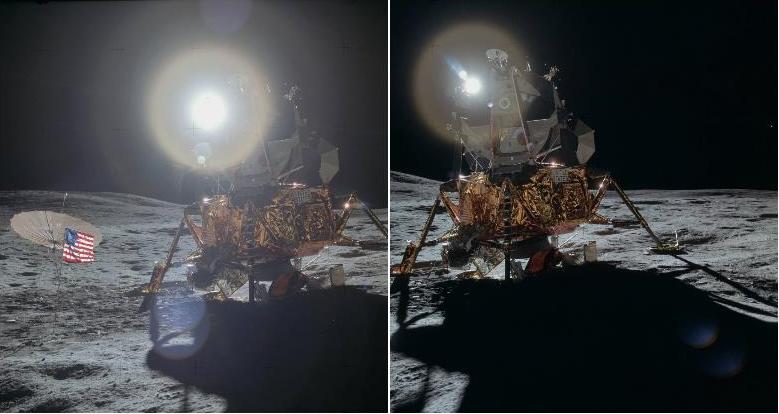
But, there's even more remarkable:
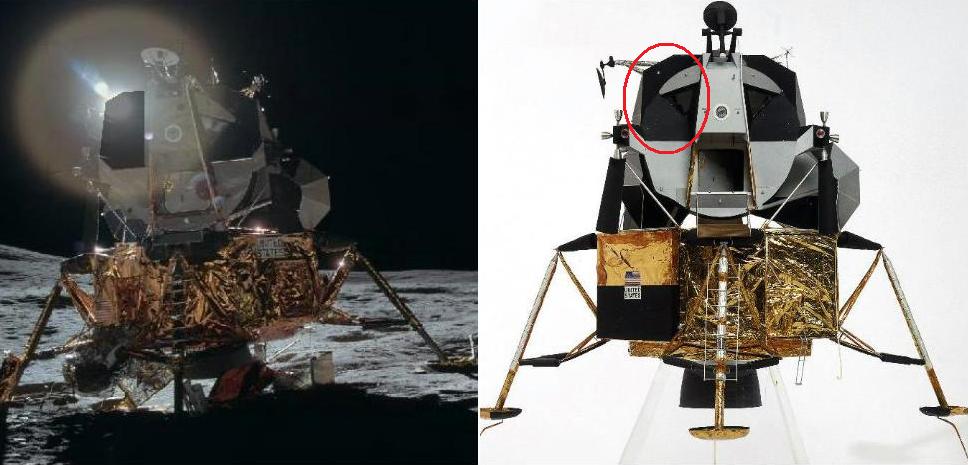
As I show here by graying a part of the lem, we can see the sun through the lem like the lem was transparent!
In Apollo 15:
There are two shots which have been made for the photo AS15-82-11057; if we superpose them, we can see that the zoom has been changed between the two:

How could the astronauts make a slight change of zoom?
Between the photos AS15-82-11057 and AS15-82-11058, the direction of the sun changes importantly and yet the camera keeps the same direction (I have checked it by measuring angles).
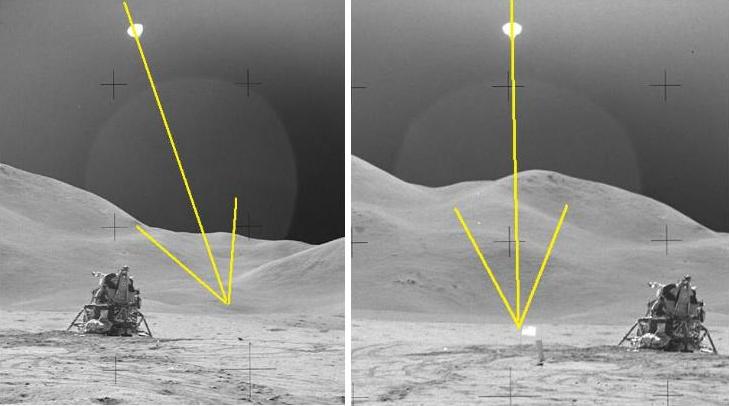
The background and the foreground move exactly the same way, like they were stuck together:
 )
)
This is of course irrealistic, the foreground and the background move differently when you move laterally.
An example of wrong reflection in the visor:
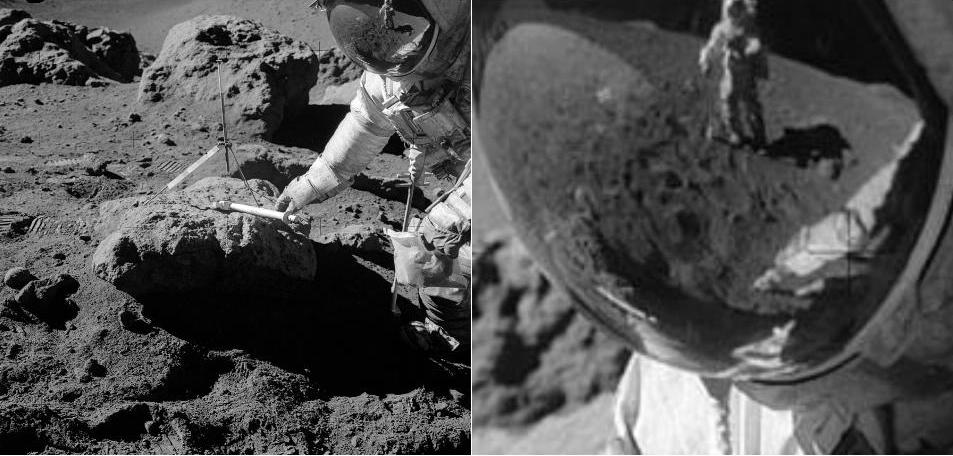
The way the visor is oriented, the tibias of the photographer should be oriented in the other direction if he was really ready to take the photo we see.
One of several examples of photos of shadows of the astronauts in which it is obvious that none of the two astronauts could take the photo:
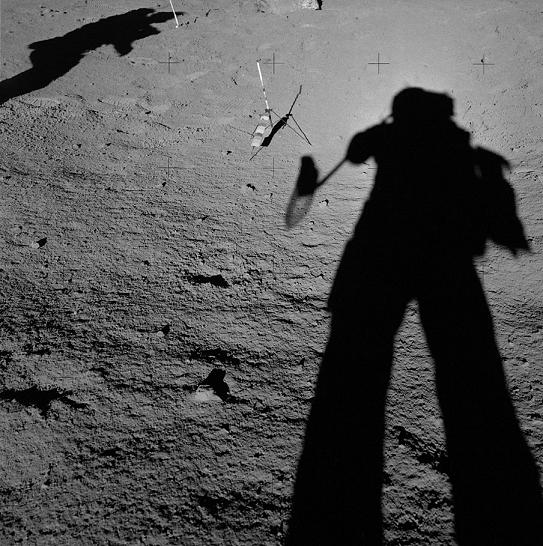
I also love this one:
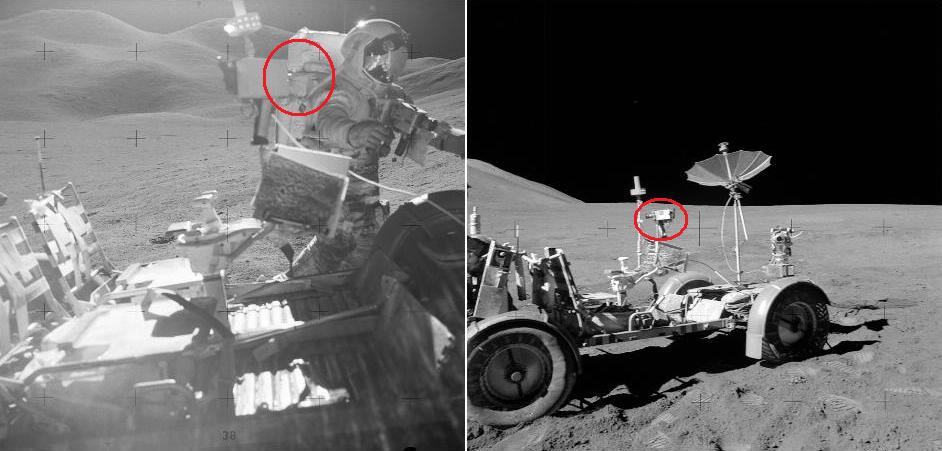
The bag of the astronaut which partially hides the camera of the jeep when he is not on it, and it is obiously impossible.
I also live this one:

An astronaut is taking a photo of the moon (AS15-88-12004), and in the reflection of the glass we can see he wears a ring.
The only astronaut who was wearing a ring was the commander Scott...but his ring has a dark blue saphir that we don''t see on the ring of the reflection!
In Apollo 16:
What's probably most remarkable in Apollo 16 is the trick of the mud spots.
On some thirty photos, there are exactly the same mud spots.
Here is a gif made with the photos AS16-116-18575, AS16-116-18576 and AS16-116-18577.
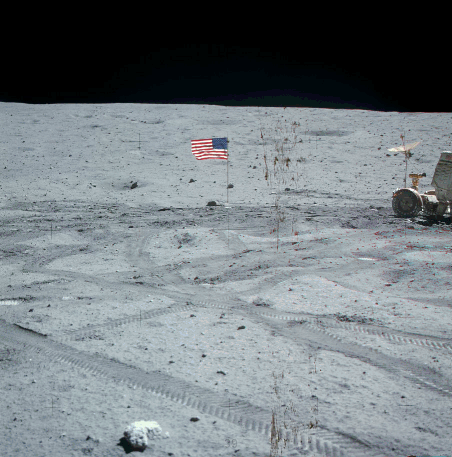
But the photos which follow also show exactly the same mud spots.
It can't be a defect of the film, for, if it had been a defect of the film, it would have been random, erratical, not repetitive like these mud spots.
And, as everybody knows, there is no mud on the moon!
On the photos AS16-107-17434 and AS16-107-17435, a pen stroke has been made on a foot of the lem, but what's remarkable is that this pen stroke follows the lem's foot on the next photo whereas the lem has moved on the photo!
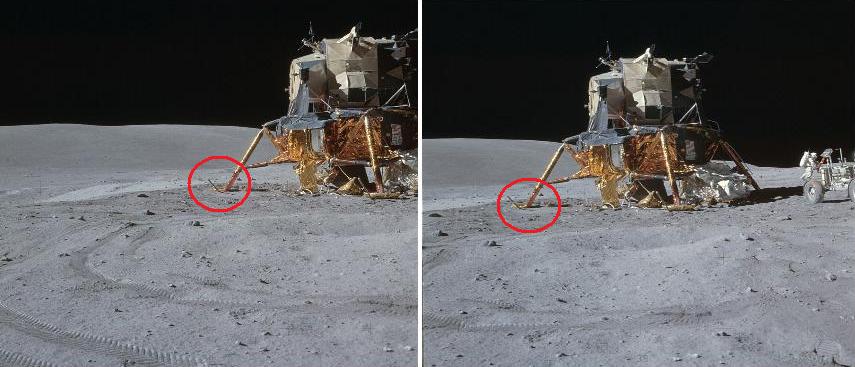
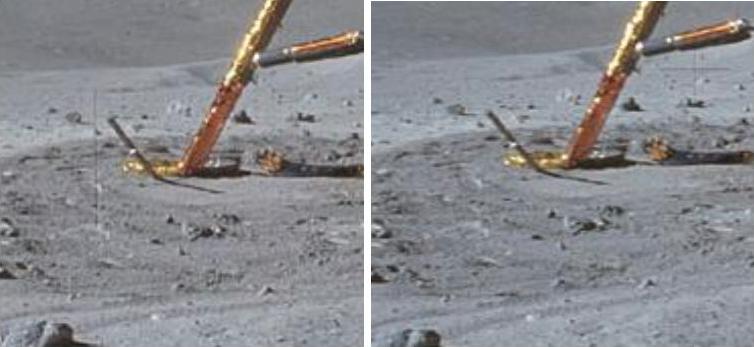
If it was something on the lens, it wouldn't have.
On photo AS16-107-17441 we see a fork, and we can see that the fork is not dug into the ground.
On the photo AS16-107-17442, we first have the feeling that the fork is suspended with a string, but when we take a close-up, we see this:
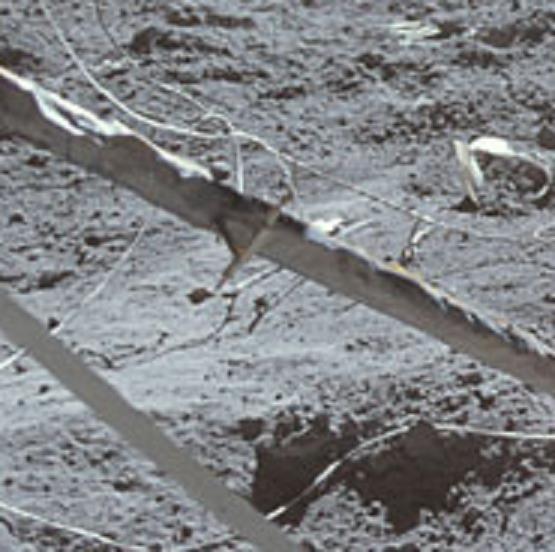
We see that the string is not tight, so the fork is really floating in the air, but what's most astounding is the bent nail we can see in the handle of the fork.
Imagine what this nail could do to the precious gloves of the astronauts!
A very surprising animation made with the photos AS16-107-17443 and AS16-107-17444 :
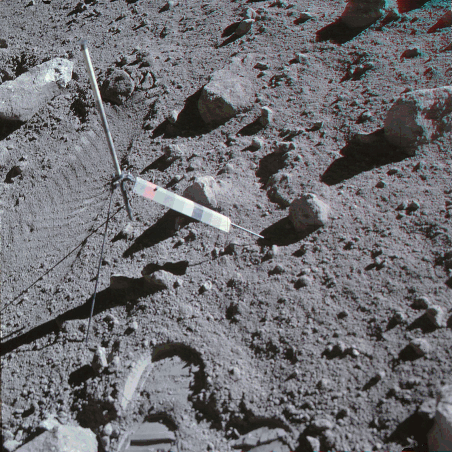
And if you want to know how they have obtained this weird effect, they have dilated the distances along one diagonal and not the other one!
An animation made with the photos AS16-109-17797 and AS16-109-17795:
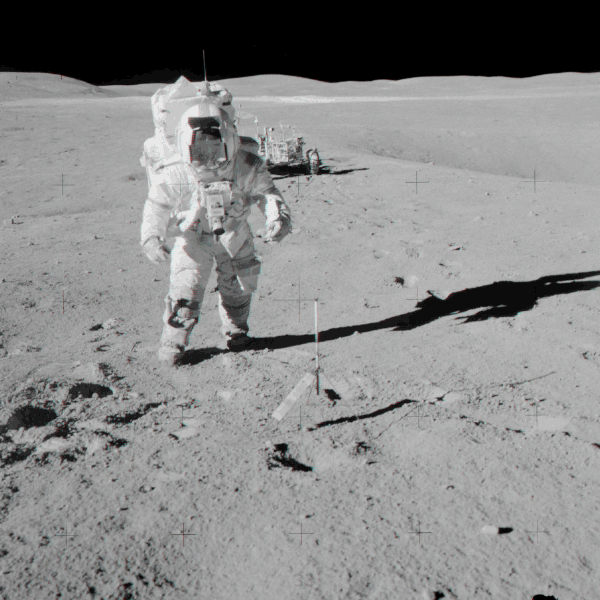
A gag showing the astronaut and his jeep getting bigger together.
Another animation made with the photos AS16-114-18387 and AS16-114-18388:
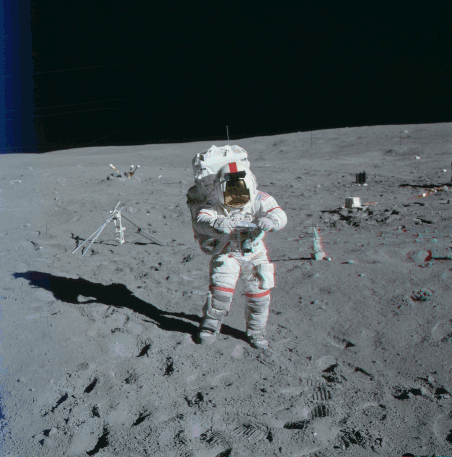
Which shows a gag in which The astronaut makes the landscape rotate.
In Apollo 17:
Apollo 17 is also full of tricks.
This one is , made with the four photos AS17-133-20295 to AS17-133-20298, is funny:

I have colored two perfectly regognizable holes to allow you to better follow the landscape.
The orientation of the front camera show the jeep is turning on the right, but it's not what the landscape we see move is telling.
On this animation made with the photos AS17-134-20381 and AS17-134-20382, the change of position of the lem and the jeep relatively to the flag shows there is a rotation of the scene around a vertical axis, but the flag doesn't follow this rotation.

On this famous photo (AS17-134-20384) of Schmitt taken under a special angle with the flag:
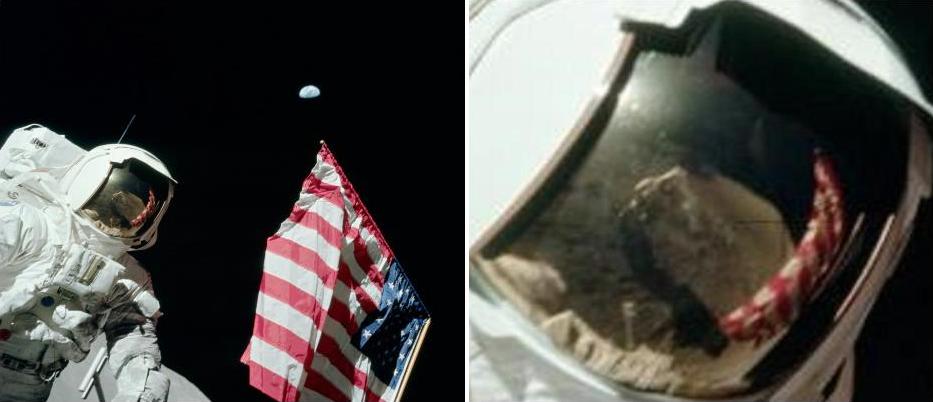
What we see on the reflection contradicts what we see on the photo in several ways:
- The photographer is standing upright while he should bend his back to allow his camera to look up
- As the visor of Schmitt is seen obliquely, the photographer should also bee seen obliquely in the visor, and he is seen facing the visor.
- The photographer's shadow cuts the lower end of the flag on the reflection but not on the photo.
Here is an animation made with the photos AS17-137-20900 and AS17-137-20901:
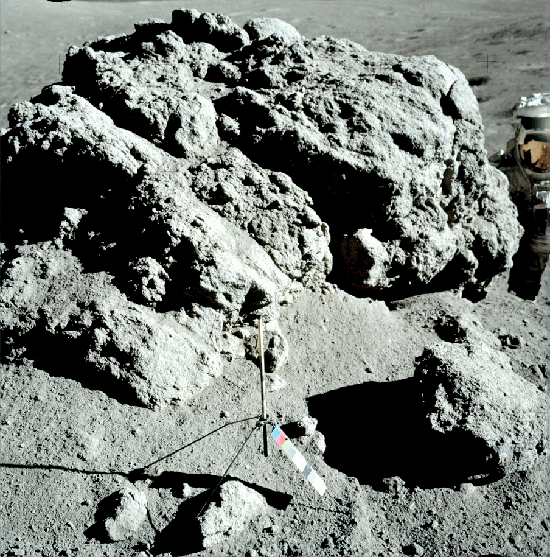
We see an astronaut's head alternatively appear and disappear.
Notice also how this head is strange; there is something unusual on the top of his helmet.
See this rotating rock:

Don't you notice something weird? On the middle of the rock, there is a part of the rock which doesn't rotate with the rest of the rock!
On this animation made with the photos AS17-141-21512 and AS17-141-21513, the background and the foreground move axactly the same way.
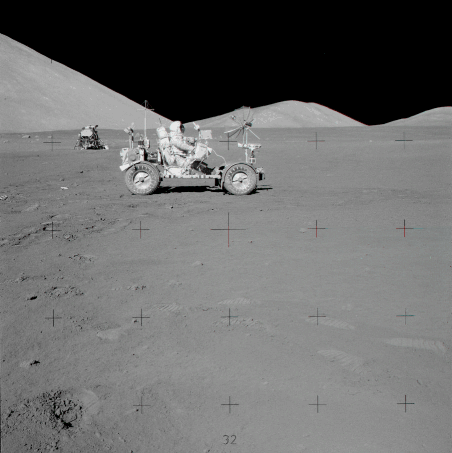
You can see a hole in the foreground which helps see that the camera has made no rotation.
Irrealistic again!
On photos AS17-142-21825 and AS17-142-21826, I have colored rocks to allow you better see them.
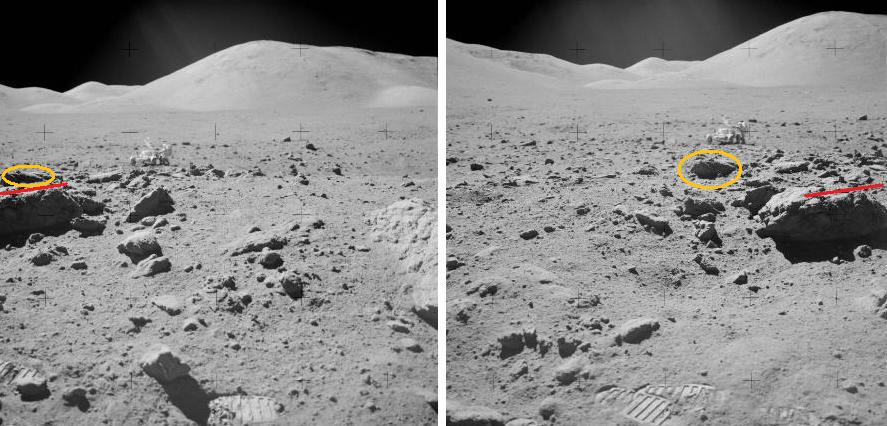
If you consider the relative position of these rocks and also the position of the jeep, you can see that:
- If we consider the foreground, the camera has turned clockwise.
- But if we consider the hills in the background, the camera has turned anti-clockwise, that is the opposite direction!
On photo AS17-134-20488, the pistons are hanging loose, they are apparently connected to nothing:
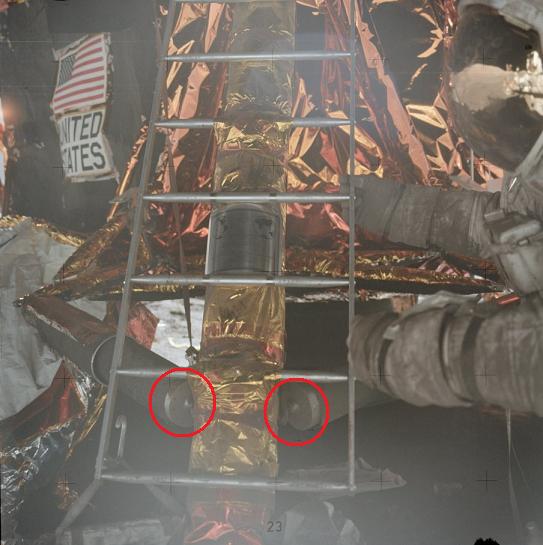
On this animation made with the photos AS17-136-20716 and AS17-136-20717...

...the lower part and the upper part are rotating in opposite directions:
The astronaut has suddenly become a kangaroo on photo AS17-146-22402?
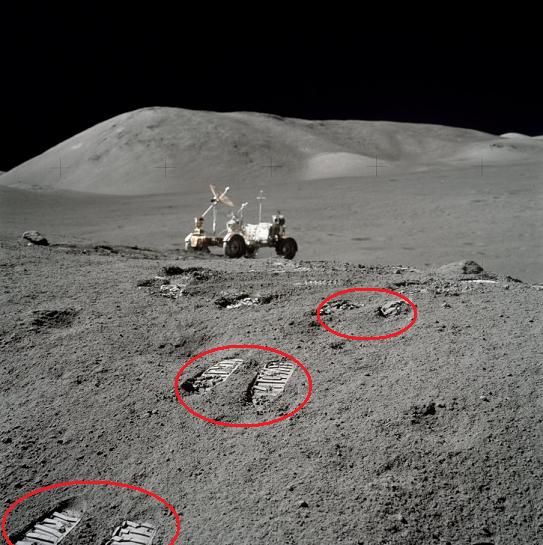












 )
)









